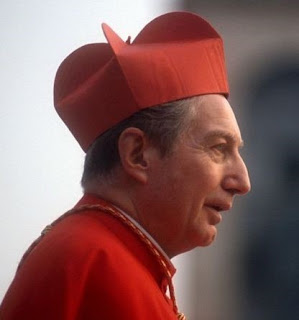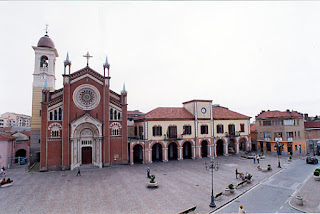Valentino Rossi - motorcycle world champion
Rider from Urbino among his sport's all-time greats
Valentino Rossi, the motorcycle racer whose seven 500cc or MotoGP world titles have established him as one of the sport's all-time greats, was born on this day in 1979 in Urbino. Only his fellow Italian, Giacomo Agostini, the eight-times world champion, has more 500cc or MotoGP titles than Rossi, whose total of 88 race victories in the premier classification is the most by any rider. Across all engine sizes, he has been a world champion nine times, behind only Agostini (15) and Spain's Ángel Nieto, who specialised in 50cc and 125cc classes. Britain's Mike Hailwood and Italy's 1950s star Carlo Ubbiali also won nine world titles each. At the highest level, Rossi did not win the world title after 2009 but continued to defy his age until retiring in 2021 at the age of 42. Rossi came from a motorcycling family, his father Graziano having competed on the grand prix circuit himself between 1977 and 1982. He won three races in the 250cc category in 1979, when he finished third in the overall classification. When Valentino was still a child, the family moved to Tavullia, a small town between Urbino and Pesaro, on the Adriatic coast. Read more…
________________________________________
Achille Castiglioni - designer
Leading figure in post-war Italian style
The designer Achille Castiglioni, whose innovative ideas for lighting, furniture and items for the home put him at the forefront of Italy’s post-war design boom, was born on this day in 1918 in Milan. Many of his designs, including the Arco floor lamp for which he is most famous, are still in production today, even 17 years after his death. The Arco lamp, which he designed in 1962 in conjunction with his brother, Pier Giacomo, combined a heavy base in Carrara marble, a curved telescopic stainless steel arm and a polished aluminium reflector. Designed so that the reflector could be suspended above a table or a chair, the Arco was conceived as an overhead lighting solution for apartments that removed the need for holes in the ceiling and wiring, yet as an object of simple chic beauty it came to be seen as a symbol of sophistication and good taste. The Arco was commissioned by the Italian lighting company Flos, which still produces numerous other lamps designed by Castiglioni. Achille’s father was the sculptor Giannino Castiglioni. His brothers Livio and Pier Giacomo, both older, were architects. Read more…
______________________________________
Edda Dell’Orso – vocalist
Soprano was wordless voice of Morricone soundtracks
The singer Edda Dell’Orso, best known for the extraordinary range of wordless vocals that have featured in many of composer Ennio Morricone’s brilliant film soundtracks from the 1960s onwards, was born on this day in 1935 in Genoa. Her collaboration with Morricone began when he was contracted in 1964 to provide the musical score for A Fistful of Dollars, the first of Sergio Leone’s so-called Dollars spaghetti western trilogy that was to make Clint Eastwood an international star. Leone’s producers could only offer Morricone a small budget, which meant his access to a full orchestra was limited, forcing him to improvise and create sound effects in different ways. One idea he had was to replace instruments with human voices, which is where Dell’Orso, a distinctive soprano, came into her own. Born Edda Sabatini, she had pursued her musical interests with the support of her father who, while not musical himself, could see that she had potential as a pianist. The quality of her voice became clear when she enrolled at the National Academy of Santa Cecilia, the renowned music school in Rome, where she graduated in 1956 in singing and piano. Read more…
_______________________________________
Giambattista Bodoni - type designer
Celebrity printer whose name lives on in type
Typographer, printer and publisher Giambattista Bodoni was born on this day in 1740 in Saluzzo in the region of Piedmont. At the height of his career he became internationally famous, received compliments from the Pope and was paid a pension by Napoleon. Bodoni designed a modern typeface that was named after him and is still in use today. His father and grandfather were both printers and as a child he played with their leftover equipment. He learnt the printing trade at his father’s side and at the age of 17 travelled to Rome to further his career. Bodoni served an apprenticeship at the press of the Congregation for the Propagation of the Faith, the missionary arm of the Catholic Church. In 1768 he was asked to assume management of the Duke of Parma’s Royal Press, where he produced Italian, Greek and Latin books. He started using modern typefaces of his own design and came up with the typeface that has retained the Bodoni name in 1790. He became well known and important travellers visited his press to see him at work. Bodoni produced fine editions of the writings of Horace and Virgil in 1791 and 1793 respectively and Homer’s Iliad in 1808. Read more…
________________________________________
The death of Giosuè Carducci – poet
National poet’s work inspired the fight for a united Italy
The poet Giosuè Carducci, who was the first Italian to win the Nobel prize in Literature, died on this day in 1907 in Bologna. Aged 71, he passed away at his home, Casa Carducci, near Porta Maggiore, a kilometre and a half from the centre of the Emilia-Romagna city. He had been in ill health for some time and was not well enough to travel to Stockholm to receive his prize, awarded in 1906, which was instead presented to him at his home. His funeral at the Basilica di San Petronio in Piazza Maggiore followed a procession through the streets that attracted a huge crowd. Carducci had been one of the most influential literary figures of his age and was professor of Italian literature at Bologna University, where he lectured for more than 40 years. The Italian people revered Carducci as their national poet and he was made a senator for life by the King of Italy in 1890. Carducci was born in 1835 in the hamlet of Val di Castello, part of Pietrasanta, in the province of Lucca in Tuscany and he spent his childhood in the wild Maremma area of the region. After studying at the University of Pisa, Carducci was at the centre of a group of young men determined to overthrow the prevailing Romanticism in literature. Read more…
_______________________________________
Angelo Peruzzi - footballer
Italy international who was twice world's costliest goalkeeper
The footballer Angelo Peruzzi, who made 31 appearances for Italy’s national team and was a member of Marcello Lippi’s victorious squad at the 2006 World Cup as well as winning the Champions League with Juventus, was born on this day in 1970 in Blera, a hilltop town in the province of Viterbo, north of Rome. Peruzzi defied his relatively short and stocky physique to become one of the best goalkeepers of his generation, renowned not only for his physical strength but also for his positional sense, anticipation and explosive reactions. These qualities enabled him to compensate for his lack of height and earned him a reputation for efficiency rather than spectacular stops yet he was much coveted by clubs in Italy’s Serie A. Twice he moved clubs for what was at the time a world record transfer fee for a goalkeeper. In 1999 he joined Internazionale of Milan (Inter Milan) from Juventus for €14.461 million but stayed at the Stadio Giuseppe Meazza for only a year before switching to Lazio in a deal worth €20.658 million. That record stood for 11 years until Manchester United bought David de Gea from Atletico Madrid for €22 million in 2011. Read more…
______________________________________
Book of the Day: Valentino Rossi: The Definitive Biography, by Stuart Barker
Valentino Rossi is an icon: the most successful and most loved motorcycle racer of all time, he has transcended MotoGP to become a symbol of courage, risk and daring. To race for twenty-three years at the very highest level of the world's most dangerous sport is unprecedented. But then, there has never been a motorcycle racer like Valentino Rossi. He is a modern-day gladiator, a man who still risks his life every time he throws a leg over a motorcycle. Yet for all his two-wheel talents, it is Rossi's endearing character that has seen him transcend the sport. For Rossi, every race is a home race. He turns MotoGP grandstands across the world a sea of yellow - his traditional lucky colour. In more than two decades of Grand Prix racing, he has seen it all. The deaths of rivals and friends, the glory of unprecedented success, serious injuries, fabulous wealth, the greatest battles ever seen on two wheels, the infamous on and off-track clashes with his fiercest rivals. Using exclusive new interviews with those who have been part of Rossi's story from start to finish, critically-acclaimed and bestselling motorsport author Stuart Barker has produced the most in-depth book ever written about the Italian superstar. Valentino Rossi: The Definitive Biography is a tale of speed, love and loss, told in full for the very first time, in all its adrenalin-charged, high-octane glory.Stuart Barker, born in Galloway, Scotland but now resident in Kettering, England, began working as a motorcycle journalist for Motor Cycle News. Freelance since 2001, he has written for most of the major motorcycling titles and was editor of the Isle of Man TT programme for eight years. He has written eight books including a bestselling biography of Barry Sheene and a biography of Evel Knievel which is set to be made into a Hollywood movie.
.jpg)















%2016,%20villa%20Rodolfo%20Mauri%20(Carlo%20Moroni%20con%20Filippo%20Tenconi)%20(2).jpg)





